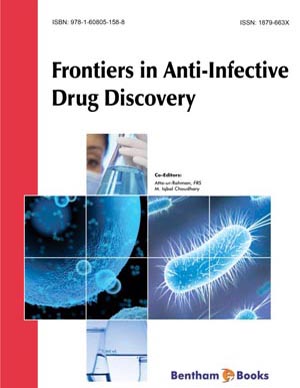Abstract
Chagas disease or American Trypanosomiasis, a parasitic infection typically spread by triatomine bugs, affects millions of people throughout Latin America. Current chemotherapy based on the nitroaromatic compounds, benznidazole and nifurtimox provides unsatisfactory results and suffers from considerable side effects and low efficacy. Therefore, there is an urgent need for new drugs to treat this neglected disease.
Over the last two decades, new advances and understanding in the biology and the biochemistry of Trypanosoma cruzi have allowed the identification of multiple targets for Chagas disease chemotherapy. This chapter summarizes antichagasic agents obtained based on i) target metabolic biochemical pathways or parasite specific enzymes, ii) natural products and its derivatives, iii) design and synthesis of lead compounds. Related patents filed and issued from 2000 to early 2009 are also discussed. Most of them claimed inhibitors on specific parasite targets such as cysteine proteinase, sterol biosynthesis, protein farnesyltransferase, etc. Particularly, those related with cysteine proteinase inhibitors were the most represented. Natural products also displayed many anti-T cruzi lead compounds. In addition, few patents claiming natural or synthetic compounds with antichagasic activity, disclosed no specific target. However, only a small proportion of all these patents displayed specific data of biological trypanocidal activity.
Keywords: Chagas disease, Trypanosoma cruzi, drug targets, synthetic inhibitor compounds






















